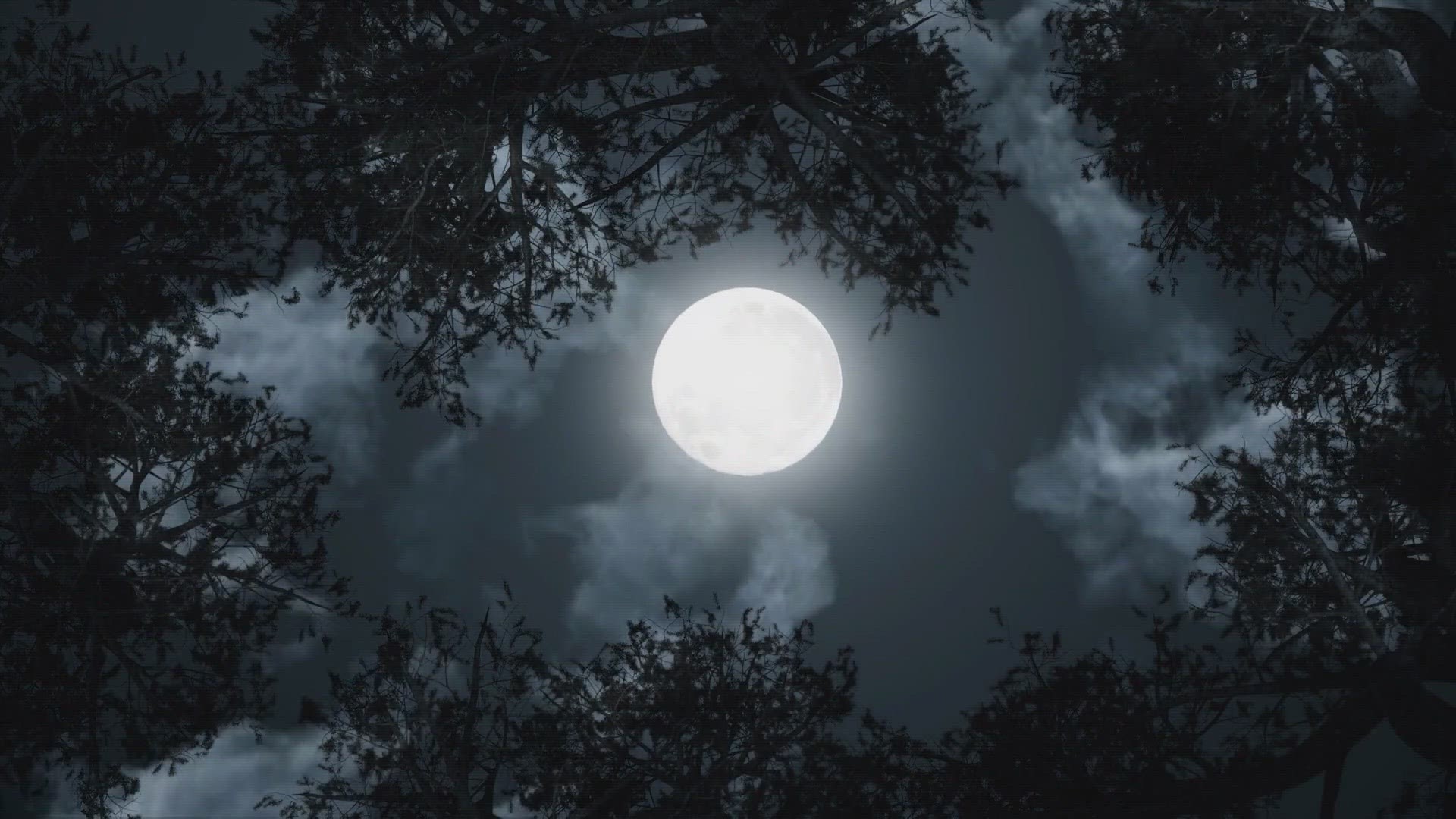WASHINGTON — The full moon Friday is set to be a spectacle worthy of ushering in the fall season, as both this year's harvest moon and the last supermoon of the year.
The harvest moon is often used as an unofficial sign that the summer has turned into fall, happening just after the autumn equinox.
But this year's harvest moon is extra special because it coincides with a supermoon phase, when the moon is closest to the earth, appearing brighter and larger than normal.
How often does a full moon happen?
The most common answer to this question is 28 days, but that's not actually correct. A full moon happens roughly every 29.5 days.
Technically, it takes 27.3 days for the moon to complete an orbit around the earth. But because both are spinning around the sun, the moon has changed position enough that the sun hits it at a different angle on day 27 than day 0. It takes another two days for the sun's light to hit the moon exactly like it did on day 0.
Usually, this means there's one full moon every month. But occasionally, the timing can work out so that there's a full moon at the beginning of the month and one at the end. That second full moon is known as a blue moon.
What is a supermoon?
The moon's orbit around the earth is an ellipse, not a perfect circle. A full moon is considered a supermoon when it comes within 90% of perigee, its closest point to Earth.
According to NASA, the closest supermoons appear "about 17 percent bigger and 30 percent brighter" than the furthest, faintest moon of the year. That 17% isn't actually enough to make the moon look noticeably bigger, but NASA says supermoons are still a bit brighter than other full moons.
The perigee is about 226,000 miles from Earth — about 25,000 miles closer than the moon's furthest point.
While it's popularly used to describe the closest full moons, "supermoon" isn't an official astronomical term. In fact, it was coined by an astrologer in 1979.
What is a harvest moon?
This week's supermoon is the last of four this year, and comes just after a double supermoon in August, which had two occurrences of the rare phenomenon.
So-called supermoons occur because the orbit of the moon around the Earth is not a perfect circle but is instead a flattened circle or an ellipse. This means that during its 27.3-day orbit, there are points at which the moon is closer to the Earth and points at which it is further away.
The full moon for each month is given a unique name. For September, in honor of the reaping of crops, it's the harvest moon.
The harvest moon is one of the most familiar of these names, and refers specifically to the nearest full moon to the autumn equinox (when the sun crosses the equator and day and night are approximately of equal length). This year, the equinox happened on Sept. 22.

